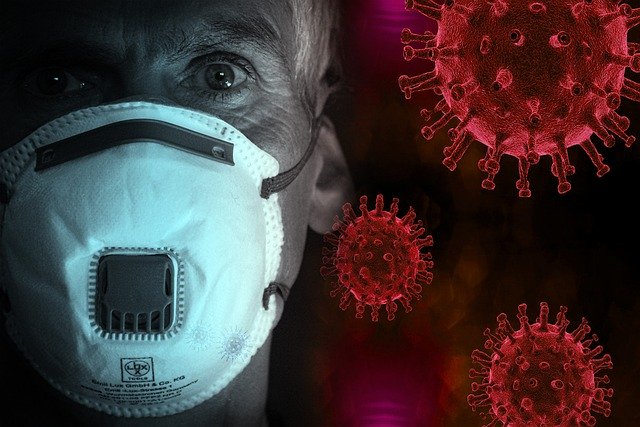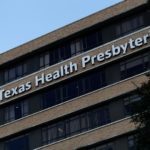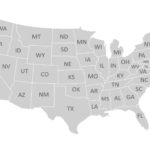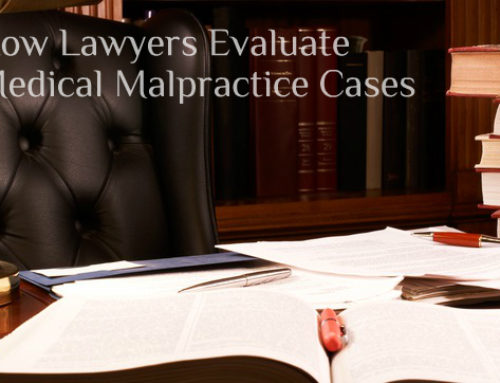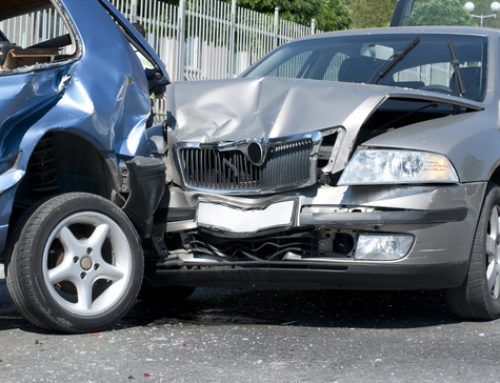It’s tough for the American workforce right now. It’s common for many to fear exposure to a dangerous infectious disease and subsequently lose work, infect their families, or worse. Complicating this further is uncertainty of what life will be like if forced to stay at home to prevent spread or to recover from the disease.
How will you cover your bills if you cannot work from an illness contracted while at work? Is exposure to COVID-19 something that workers’ compensation covers? If so, how much and to what extent?
The answers to these questions are tenuous and difficult to understand. This guide breaks down the answers by current standards, policies in effect, and precedents set in somewhat similar circumstances.
Rules for Federal Employees
Federal Employees are covered under the Federal Employees’ Compensation Act (FECA). This lays out the rules for how to determine if an exposure occurred during job related duties.
Federal worker’s get a broader application of coverage for filing claims because thy are both essential and always on the front lines of this type of situation. Those covered by FECA include first responders, public health personnel, front-line medical, and law enforcement.
The US Department of Labor (DOL) oversees FECA and its procedures. They make a distinction between how claims are filed for high-risk employees and those without high-risk.
For high-risk persons, there is a 30-day period after exposure to file a CA-1 that entitles and employee to 45 days of Continuation of Pay. These exposures are not investigated, nor do they require any outstanding evidence. It’s merely assumed that given their proximity that an exposure is likely and therefore granted.
For those not in a high-risk employment position (dispatchers, office personnel with low outside contact) the same 30-day period applies. If a CA-1 is filed in this time it grants the same 45-day Continuation of Pay. The difference is that supporting evidence to how the exposure occurred needs to accompany the CA-1 form.
Rules for Public Employees
For employees working in private industry, things are different.
Even for employees in what are considered essential roles, claims are not nearly as easy to file. The criteria for considering exposure must be taken on a case-by-case basis which slows things considerably.
Much like the federal differential between high-risk and non-high-risk the separation for claims includes looking at the likelihood for exposure. A job that has some capacity of forced contact with the infected or to otherwise increase risk of exposure falls into the high-risk group.
It must then be established that the exposure occurred as part of a work-related duty and not from other casual contact at home or in public.
Within a company, things get more difficult. If you’re exposure comes from a fellow employee that contracted COVID-19, your claim will likely be denied.
In cases where a claim moves forward, the Industrial Insurance Act allows for treatment.
Key to getting a claim approved is establishing three elements.
- An employee/employer relationship
- The work put the worker in a contact that would not have otherwise occurred
- A specific infection event during a job duty needs to be identified
The exact form needed to file an insurance claim for treatment and/or time-loss benefits will differ from one industry/employer to the next.
Overall, insurance (whether private or employer’s) pays for testing to confirm if COID-19 has been contracted. If it has, then the claim proceeds and treatment is covered under workers’ compensation protocols.
If the testing proves negative, then the worker can still be covered for quarantine period. This additional coverage helps to slow the spread of the virus.
COVID-19 and Remote Workers
Given that exposure related to the performance of job duties is a requirement for filing a workers’ compensation claim in regards to COVID-19, remote workers are largely ineligible.
The same rules that apply to making a claim when telecommuting apply here with the addition of providing evidence of a specific exposure event.
Under the ADA, employers need to offer reasonable accommodations to those with an illness after confirming its existence. In this case, it means making a job remote whenever possible.
If you have been confirmed with COVID-19 or suspect you have it, employers have a responsibility to protect the rest of the workforce by providing accommodations if they can.
For some jobs this means creating a remote alternative. For others, no remote work is possible.
Defining Exposure
Traditionally, the rules about exposure within Worker’s Compensation guidelines apply to exposure to toxins or chemicals. These are governed by guides provided by OSHA, including terms such as permissible exposure limits (PELs), and rely on hazardous material sheets and educational information.
In some states, exposure is spoken about in term of ‘occupational diseases’ in opposition to ‘ordinary diseases of life’. The distinction is made to avoid allowing Compensation claims to be made for infections and illnesses that can occur anywhere in life and separate them from those that are only likely encountered within certain jobs.
Some states are looking to other specific laws for determining if contracting COVID-19 can be linked to a workplace exposure. Longshore and Harbor Workers’ Compensation Act is one example where it’s carte blanche coverage of workers involved in jobs around waters and the building and repair of sea vessels puts them in a specific, but non-high-risk, exposure.
This helps track illnesses that most frequently come from occupational hazards. In this list you would normally diseases such as these.
- Hearing loss
- Repetitive stress injuries
- Mesothelioma
- Asbestosis
- Popcorn Lung
In the past these rules have been expanded to cover infectious diseases contracted as a direct result of exposure form an occupation. Even so, the few cases that exist are typically isolated incidents where it is easier to demonstrate proximal cause.
With the wide-spread influence of COVID-19, tracking exposure risks and incidents is exceedingly difficult.
Studies conducted in Germany and with data from US note that exposure rates for health care workers rise considerably when personal protective equipment is in short supply or is underused.
Establishing a link between PPE availability and training and exposure is a strong indicator of risk and therefore claim success. To put it another way, a job that is required to distribute PPE to employees has more of a responsibility to limit exposure than one that doesn’t.
Typically, delivery drivers and grocery store workers do not use PPE but in response to COVID-19 many are being urged to wear gloves and masks while performing their job-related duties. This creates a distinction between ‘occupational diseases’ and ‘ordinary diseases of life’.
Exposure to COVID-19 as a result of your workplace does not mean that the employer is at fault for the exposure. This is an important distinction. A worker need only prove that the exposure happened while performing job-related duties, not that the employer was negligent or otherwise failed to uphold a standard.
Rules and Availability of PPE
The use of PPE is the first stage in limiting exposure. OSHA provides instructions on workplace safety built around a policy of elimination and substitution. This means implementing safety protocols at the workplace to remove the risks rather than mitigate them. In the case of an infectious diseases, this means limiting who to consider essential personnel.
Attempting to remove exposure by putting distance between employees and others when possible also falls into these policies.
PPE is not just masks and gloves but also offering enough cleaning supplies (hand sanitizer, breaks for hand washing) and distancing options (drive-up windows, drop off and pick up points).
Offering PPE is only one part of the plan. A company must also provide proper instruction in how the PPE is to be used. The quality of the PPE is also a responsibility of the employer.
With the current shortages and the public’s woeful lack of understanding of infectious diseases spread, this is a gray area. Precedent through the law suggests that when an employee uses PPE in good faith a filing a claim is possible.
If the employee doesn’t use the PPE because of negligence, rather than misconduct, filing a claim is also possible.
When to File a Claim
Filing a claim should be done as soon as possible. This urgency reflects the difficulty of establishing a specific exposure event. In addition, it helps to establish numbers and warrants for testing.
As testing is currently limited, only those with a high-risk of exposure and those showing symptoms can be tested. Filing quickly connects the testing period with the rest of the timeline.
Testing and Establishing Infection
Coverage of tests and the quarantine time needed to recover and to wait for testing to be complete have been mentioned above.
Reducing risk is an important part of OSHA’s guidelines and necessary to limit spread of COVID-19. A person that has been tested cannot return to work until the test results come in and the quarantine period (14 days) has passed.
To avoid workers spreading an infection, compensation covers this time period even if no infection is present. However, as establishing an exposure event is a necessity of filing a claim, the presence of negative tests will present a challenge.
Where a claim has been accepted and no infection occurs, compensation is still awarded for the quarantine period for federal employees. For private sector employees it is likely to go the same way, but no guarantee or precedent has been set for this.
Lingering Damage and Future Health
Current compensation is for treatment for the disease COVID-19, testing, and lost wages during recovery.
Long-term injury related to the illness is not yet determined. If medical professionals determine that lingering injury and loss of function are a result of exposure, compensation for loss of wages and quality of life could get considered.
Whether to group in wrongful death or assign medical malpractice to COVID-19 cases from exposure is a question without a clear answer. Again, as a novel virus and an unprecedented time for the world, it’s hard to say how to handle the question.
Precedent in similar events indicates that compensation insurance bears the burden. You see this pattern with the discovery of chronic illnesses such as asbestosis or mesothelioma.
Factors Effecting Compensation
As with other workers’ ompensation claims, awards of compensation can be lowered or rejected if the employee is found to be violating company safety rules. This can result in a 15% reduction or a complete rejection under the ‘prohibited act’ defense.
If an employee is exposed while directly violating a workplace directive, then no compensation is awarded. To establish a prohibited act defense, an employer needs to prove one of the following criteria.
- The reasoning behind the prohibition is valid
- The employee knew about the prohibition
- The employer enforced the prohibition
- That the prohibited act carries unreasonable danger
- The employer could reasonable foresee that prohibited act would be performed
Clear articulation of prohibited acts is difficult with a sudden shift in procedure for essential but non-high-risk jobs. Posting of rules and communication of policies needs to be clear and enforcement needs to be thorough.
Privacy and COVID-19
It is usually a requirement for employers to protect medical information and to not provide additional information when an employee is on leave of absence or otherwise accommodated from a workplace exposure.
If an employee has filed a Compensation claim, is on FMLA leave or ADA accommodations are all kept private.
Given the risk and the need to inform others of exposure, these rules are hard to enforce. Employers are likely to use a general notice and to omit specifics when warning other employees of risks.
These necessary generalized statements can make establishing a specific exposure event difficult.
You’re Not Alone
It’s a trying time for employers and employees alike. Modern industry has never faced a challenge like the one presented by establishing rules for COVID-19. This applies to how to conduct business while the disease spreads and how to appropriately handled workers’ compensation claims brought on by exposure.
The rules will be tested, and new precedents are highly likely to be set during this time. Protect yourself and learn more information about this developing situation by contacting us for a consultation. We are always here to help.


